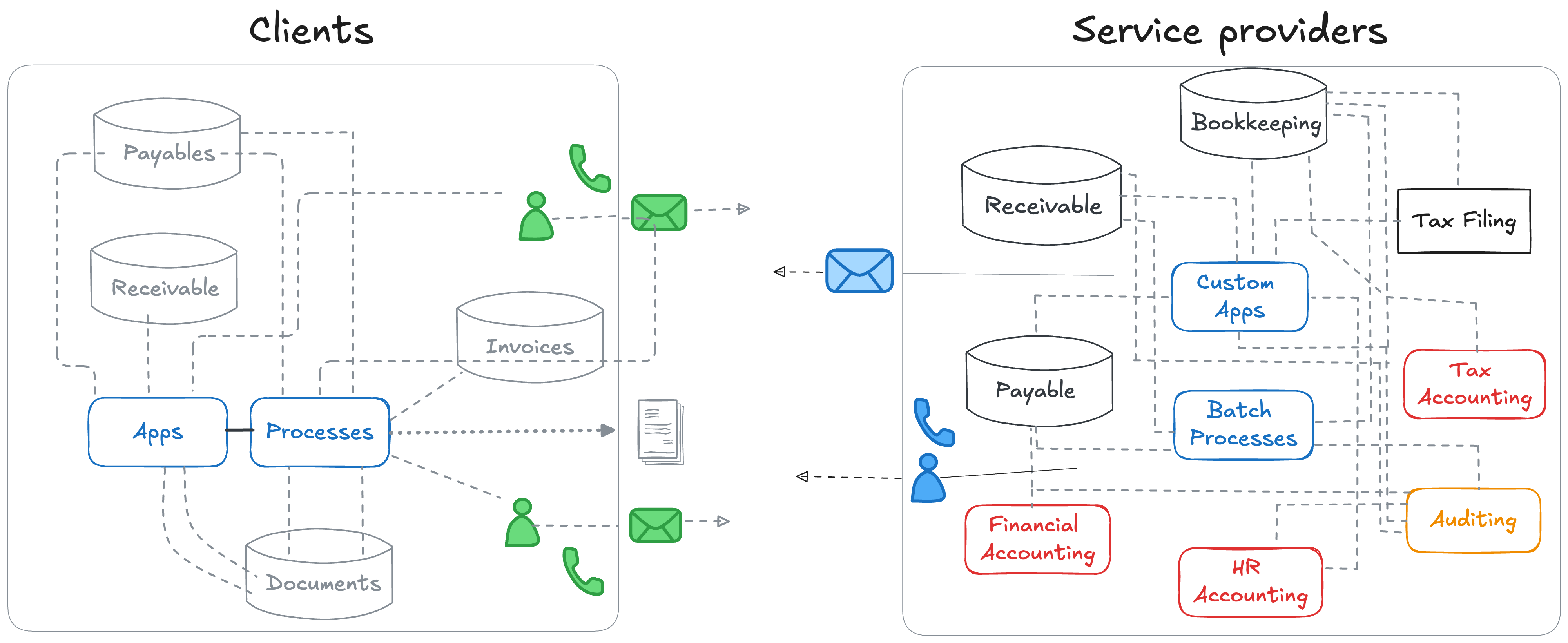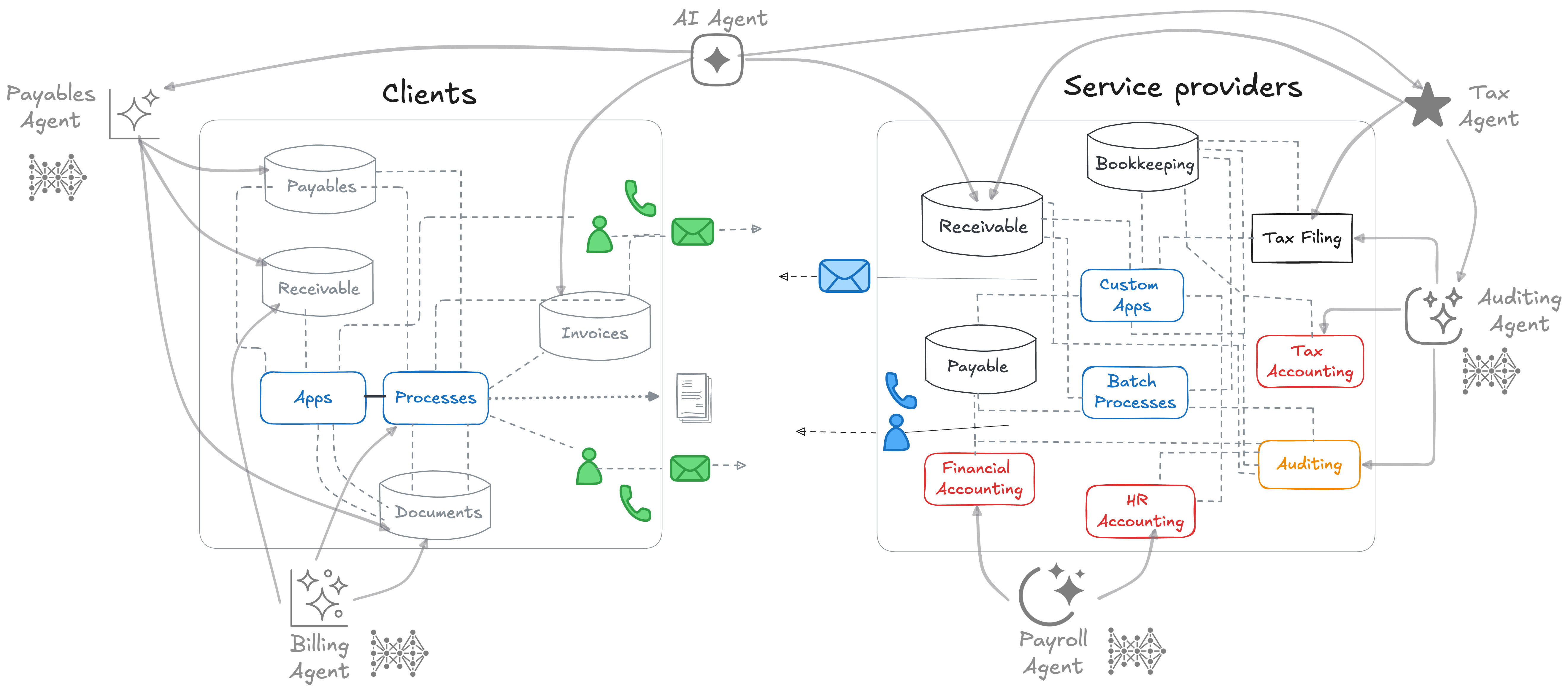Agents at scale in enterprises: A different perspective
After spending many weeks in San Francisco participating in AI meetups and talking to AI/ML developers, experienced engineers, product managers and investors, I’ve noticed a lot of exciting development — and also a lot of hype — happening around Artificial Intelligence and Agents.
Protocols like MCP and A2A are emerging to create structured ways for LLMs to interact with services and for Agents to communicate with each other.
But here’s the thing: while everyone has strong opinions about the “right way” to use AI Agents, very few have validated their approaches with real business cases, and most assumptions are based on the fact that Users actively prompt Agents to perform tasks.
We’ve taken the opposite approach — starting with real business problems and working our way to the technology, rather than starting with the technology and trying to find business value.
This different perspective has led us to a crucial insight:
How do you keep control over a growing graph of Agents?
Business environments — especially in finance and accounting — are often a hidden chaos. This is a typical chaotic scenario:

Simply wrapping internal legacy systems inside a graph of AI Agents might automate inefficiencies, but it can also amplify the chaos instead of solving it:

In an AI environment — inherently non-deterministic — one small mistake from one agent can cascade through the entire system and quickly lead to disaster.
Without control and reliability, enterprises simply can’t adopt this technology safely.
Security, access control, logging, auditing, and user-level observability must be core design principles — not just afterthoughts for developers to improve Agent behavior.
Even if an Agent becomes 99% reliable, if its output feels unpredictable or opaque to the user, adoption will suffer. In accounting, for example, you can’t afford to be “almost correct” — you must be 100% correct, 100% of the time.
Why Big Graphs of Agents Smell Like Trouble
As experienced developers, we know that a large graph of tightly coupled services is usually a bad sign.
- What if one node fails?
- What happens when you have to change an interface that 10 other nodes depend on?
- What if response times suddenly spike?
At a recent conference with a highly experienced AI/ML team from Google Cloud, they admitted: as the agent graph scales, predicting outcomes becomes nearly impossible.
We are firm believers that AI Agents are a game-changer for businesses. But having Agents blindly talk to each other in a non-deterministic cascade only makes sense in very specific use cases — like sourcing candidates for hiring or organizing a trip.
But not for internal critical functions like:
- Tax calculations
- Currency conversions
- Trade tracking across thousands of transactions
A Better Path: Event-Driven Domain-Specific System of Orchestration for Agents
For internal enterprise operations — finance, accounting, logistics — an event-driven system of orchestration for Agents makes far more sense.

In this model:
- Agents don’t talk to each other directly.
- Agents focus on a single unique task.
- They interact with the core system, generating and reacting to events that other agents can react to.
Advantages of an Event-Driven over Traditional Design:
- Agents can autonomously respond to system events without requiring explicit user prompting.
- Clear, traceable inputs and outputs — visible to users.
- The access token storage and management is centralized, not spread across multiple agents.
- Each agent acts with the least permission necessary.
- A failure in one agent doesn’t cascade — it can be retried independently.
- Agents define a schema for operation — ensuring consistent intermediate states.
- Agents can be built in any tech stack or framework and deployed in the cloud or on-premises.
- You can start small, testing a simple use case, and scale safely.
This structure lets you tap into AI’s strengths selectively:
- Non-determinism where it makes sense (onboarding, configurations, parsing, analysis and insights, etc.)
- Determinism where it’s critical (calculations, conversions, trades and inventory tracking, etc.)
By designing agents to be small, independent, and isolated, we enable the safe adoption of modern development practices and AI-powered tools—embracing a “vibe coding” mindset that encourages rapid iteration and experimentation. This approach lets us quickly create, deploy, and release new agents within minutes, all while maintaining system stability and reliability.
AI Adoption Is a Journey — and So Are the Agents
We think about Agents as an abstraction of the “dream virtual employee”:
- First, a Bot: An intern that does simple, repeatable tasks exactly as instructed.
- Next, an Assistant: A new grad who can reason, help, and add value.
- Eventually, an Agent: A star employee who takes initiative, solves problems, and even surprises you with excellence.
Depending on the business need, you might require one, two, or all three types working together.
Where We Are Today
We’re early in this journey — but we’re seeing real results:
- We currently operate with 5 vertical bots that respond to events in Bkper books, automating specific tasks deterministically.
- We’re starting to use LLMs to parse more complex files, assist with book configurations and onboarding.
Soon, we plan to expose a MCP server for users to interact with Bkper from the context of their LLM of choice.
In the medium term, we expect to turn Bkper Agent into a MCP Client, so users can integrate multiple MCP Servers to their chat interface, as well as a daily event on Bkper Books to allow agents to audit, validate and process data asynchronously — at scale.
In the near future, we expect to move towards a reimagined ERP — allowing data entry apps and interactive dashboards to be created dynamically based on each customer’s specific scenario, fully automating the enterprise’s operations and working 10x better at 1/10th the cost compared to any traditional ERP.
Real-World Impact
Bkper is AI-First since day one, from design to implementation and culture. Today, we serve users in over 100 countries and have paying customers in 52 countries—all supported by a lean team of just four: one in operations, one in customer success, and two in product development.
We’re extending these same capabilities to our clients. For example, Brain, one of our flagship partners, leverages our platform to deliver portfolio accounting for 1,500+ funds and family offices throughout Latin America—with a team of fewer than 80 employees.
By comparison, Brain’s competitors like Formidium, serving a similar number of clients, require 500+ employees.
That’s the power of AI done right.
And we’re just getting started.
Want to learn more about what we’re building? Feel free to contact me at mael@bkper.com.
